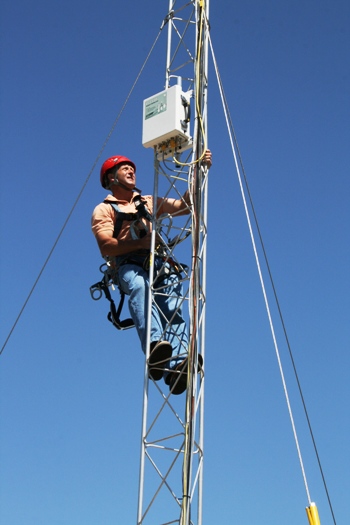ARL to Participate in CalNex 2010
ARL scientists will participate in CalNex 2010 in the months of May and June, 2010. CalNex 2010 is a joint field study, involving NOAA, the California Air Resources Board, and numerous academic scientists, that will take place from May to July. The study will look at the atmospheric processes over California and the eastern Pacific coastal region, with a particular emphasis on the interactions between air quality and climate change issues. The ARL component of this study will be on field experiments conducted at the urban Supersite near Pasadena, CA and at an agricultural site near Modesto, CA. Scientists with ARL’s Atmospheric Turbulence and Diffusion Division will operate a suite of fast-response wind, temperature and solar radiation instrumentation at the urban Supersite to measure various components of the energy balance system. At the agricultural site, ARL scientists will partner with scientists from the University of California at Davis (UC Davis) and Lawrence Berkeley National Laboratory to quantify ammonia exchange processes over an agricultural ecosystem adjacent to a dairy farm.
Background: California has long been the Nation’s leader in the fight against air pollution and is now the lead in the Nation’s effort to address global climate change. California and NOAA recognize that air quality and climate change are interrelated. CalNex 2010 is a major climate and air quality field study that seeks to answer important scientific questions about emissions, chemical transformations, climate processes, transport, and meteorology in California. The study plans to utilize several research platforms, including NOAA aircraft, a ship, satellite observations, and ground-based measurement sites.
Significance: ARL’s urban component of the study will improve understanding of turbulent flow characteristics just above the urban canopy and the local climate forcings which drive it. This will lead to a better understanding of air quality and air-surface exchange in urban environments and will provide an urban meteorology base to support CalNex air quality model development and evaluation. ARL’s ammonia measurements will be used to provide information on how much agricultural ammonia is potentially deposited from the air to nearby crops. Ammonia is a form of reactive nitrogen (a nutrient) that can contribute to a ‘cascade of effects’ in terrestrial and aquatic ecosystems, including soil acidification, coastal water eutrophication, and loss of biodiversity. It also contributes to air quality issues by playing a role in the formation of fine particulate matter. Ammonia emissions from agriculture have increased dramatically in recent years and account for more than 80% of total emissions worldwide. Yet, large uncertainties in emissions inventories persist, in part due to a lack of field measurements.


